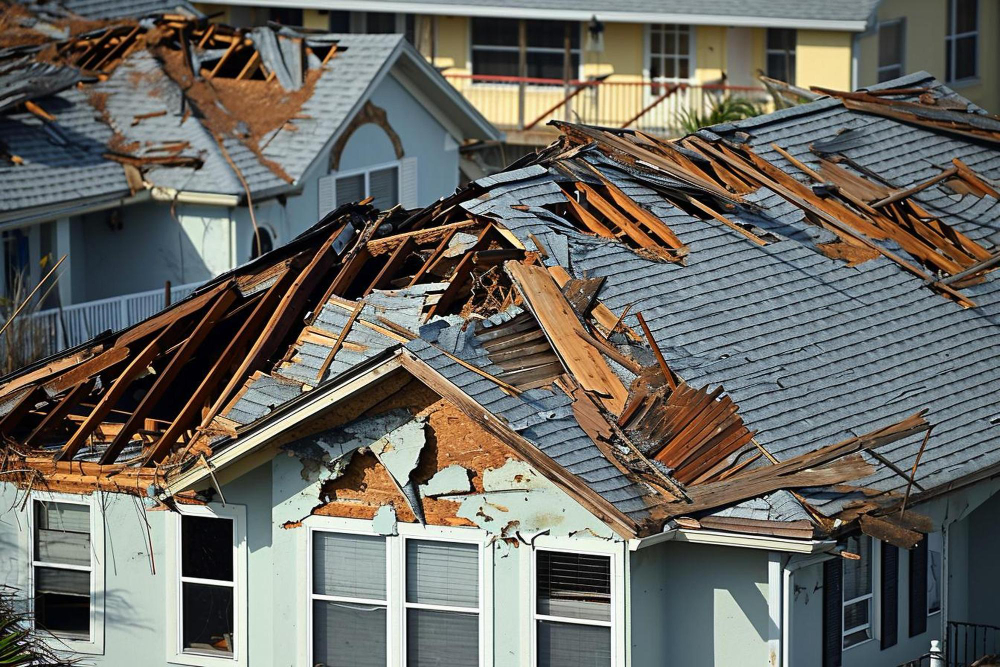 (888) 979-7969
(888) 979-7969
 (888) 979-7969
(888) 979-7969

In the aftermath of a property disaster, the road to recovery can be a labyrinth of paperwork, decisions, and negotiations. Among the first steps in this complex process is submitting an insurance claim to start rebuilding your life and property. However, the path to a successful claim can be fraught with pitfalls and delays. In this guide, we'll walk you through the critical steps to take before and during your claim submission process, emphasizing the importance of strategic planning and clear communication to secure the best possible outcome.
From the first inkling of a potential claim to the day you break ground on reconstruction, understanding the nuances of the insurance claim process can make a world of difference. We'll focus on the specific elements and best practices that can help streamline your claim submission, optimize your potential payout, and accelerate the start of your property's recovery.
Arguably one of the most pressing questions post-disaster is when to submit your insurance claim. While it may seem intuitive to file immediately, there are strategic reasons to consider a delayed submission.
Immediate action after a disaster is crucial, but speed doesn't always equate to strategy when it comes to insurance claims. Assessing the full extent of the damage and understanding your coverage can take time. Rushing to submit a claim without a comprehensive view can lead to underreported damage, unexpected costs, and a settlement that doesn't meet your needs.
Waiting to submit your claim until you have a detailed damage assessment and a clear understanding of your policy's terms can significantly improve the likelihood of a more accurate and comprehensive settlement. Pausing to review and organize your documentation can also lead to a more expeditious claims process, as incomplete or careless claims often lead to more back-and-forth with your insurer.
Solid documentation forms the backbone of your claim. These records need to be detailed, organized, and comprehensive to support every dollar you're seeking to recover.
From the first moments of discovery, your documentation process should be thorough. Take photographs, record videos, and gather all relevant information about the damage. This evidence should cover everything from structural issues to personal belongings.
A chaotic folder of digital images or a pile of hastily assembled receipts is of little use when it comes to claim submission. Organize your documentation so that you can easily retrieve and present it. Tools like spreadsheets, digital albums, and asset inventory software can help keep everything in order.
Submitting a claim isn't a one-way street. Open dialogue with your insurer is crucial for clarity, cohesion, and ultimately, a successful claim.
Once you understand your obligations and timelines, report the claim in a timely fashion. Missing deadlines could complicate your claim's processing. Be prepared to provide your insurer with a full account of the damage and the steps you've taken to address it.
Every interaction with your insurer should be documented, from email threads to phone call logs. If your conversations involve key agreements or promises, follow up with a written summary for their records as well as your own.
Your property's reconstruction is often a separate entity from your insurance claim. However, these two elements are interdependent and should be carefully coordinated.
Even before your insurance claim is fully processed, you can begin planning for reconstruction. Research contractors, consider architectural drawings, and start gathering permits. The more you can outline in advance, the smoother your reconstruction process will be.
Your insurance claim should ultimately fund your reconstruction. To ensure the two align perfectly, get estimates from your chosen contractor that you can provide to your insurer. This keeps everyone on the same page and can reduce friction during the settlement phase.
Submitting your claim before fully understanding the reconstruction process can lead to overlooking hidden costs that could delay or complicate your project.
Engage with your reconstruction team to outline potential hidden costs, from materials that need additional work to unexpected structural damage. Include these in your claim to prevent them from becoming future out-of-pocket expenses.
Don't hesitate to bring in third-party experts to advise you during these preliminary stages. Their insights can be invaluable in crafting a claim that takes all potential costs into account.
In the game of insurance claims, persistence can be the difference maker. Don't shy away from advocating for your claim and pursuing appeals if the initial assessment falls short.
If you believe your insurer has undervalued your claim or overlooked damage, don't be afraid to contest their assessment. Provide additional evidence and make a compelling case for your requested settlement.
For complex or contested claims, legal assistance may become necessary. A lawyer with experience in property insurance claims can provide you with the advocacy and expertise required to secure a favorable outcome.
Understanding and navigating the insurance claim submission process as a precursor to property reconstruction is an art as much as it is a science. Thoughtful planning, detailed documentation, and strategic communication can transform a potentially daunting process into a clear path of action that aligns all stakeholders toward your recovery goals.
Though each claim—and consequently, each reconstruction—is unique, the principles and best practices outlined in this guide can serve as a universal roadmap for policyholders seeking to assert their rights and rebuild their properties after a disaster. Remember, the keys to success in this labyrinthine process are preparation, partnership, and persistence.
If you need help with a property reconstruction in Orlando, FL, Ultra Property Damage stands ready to assist. We offer comprehensive property assessment, reconstruction planning, and insurance claim support services. Contact us today for a free consultation to start your reconstruction on the right footing.